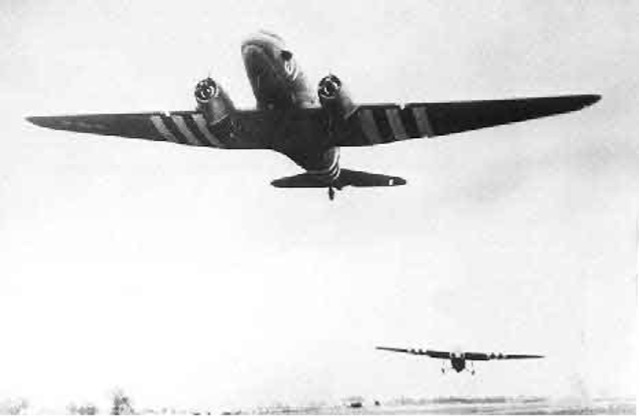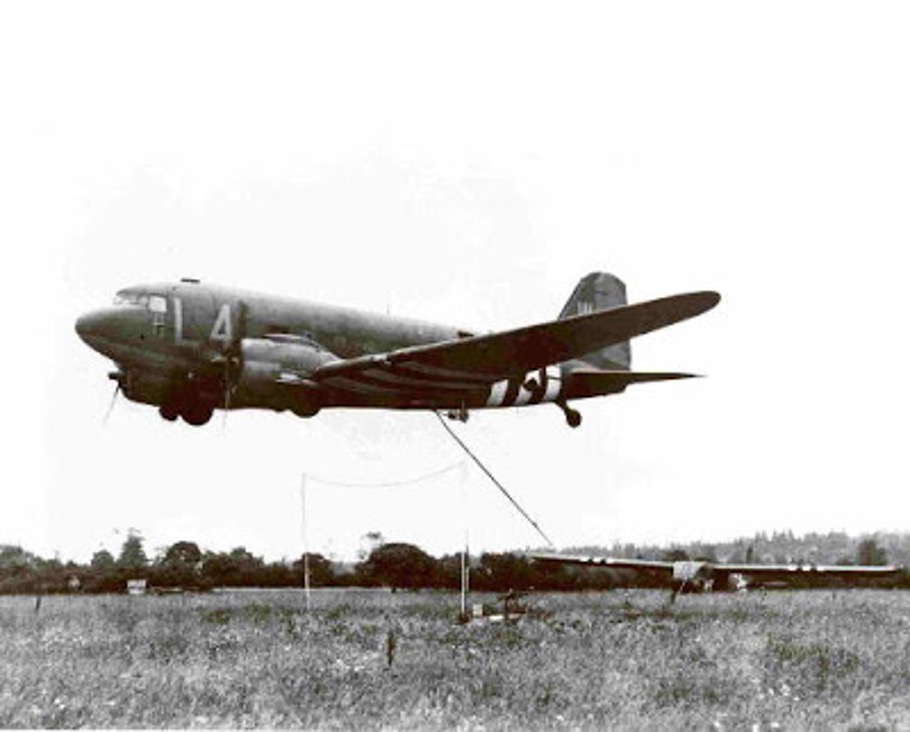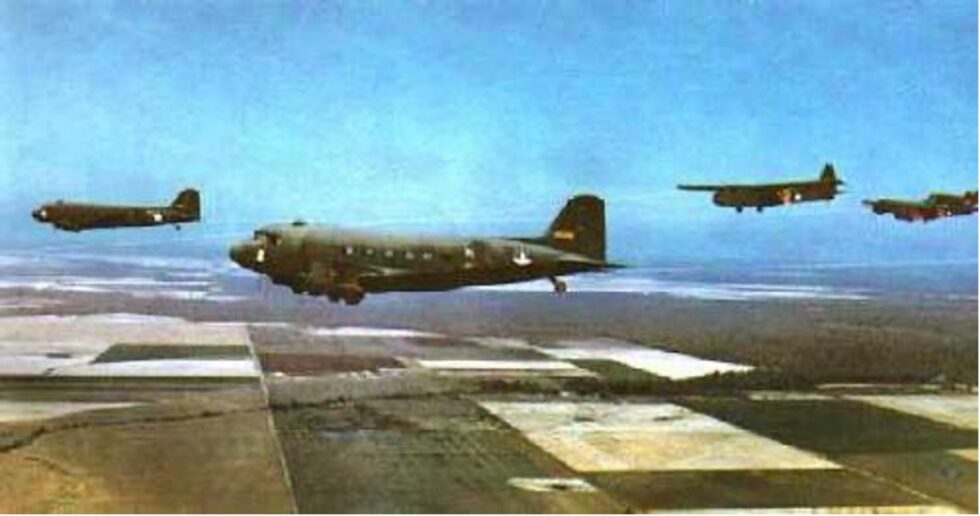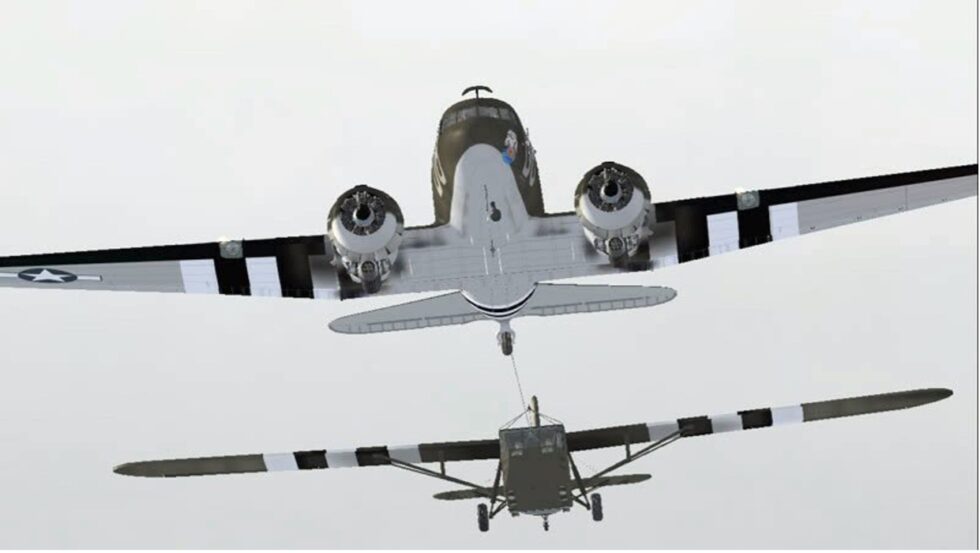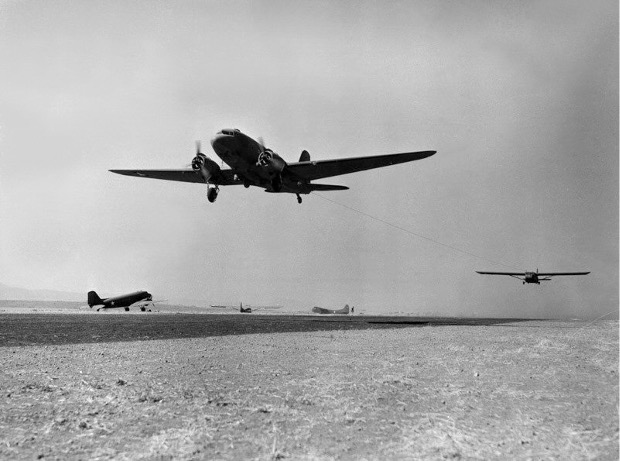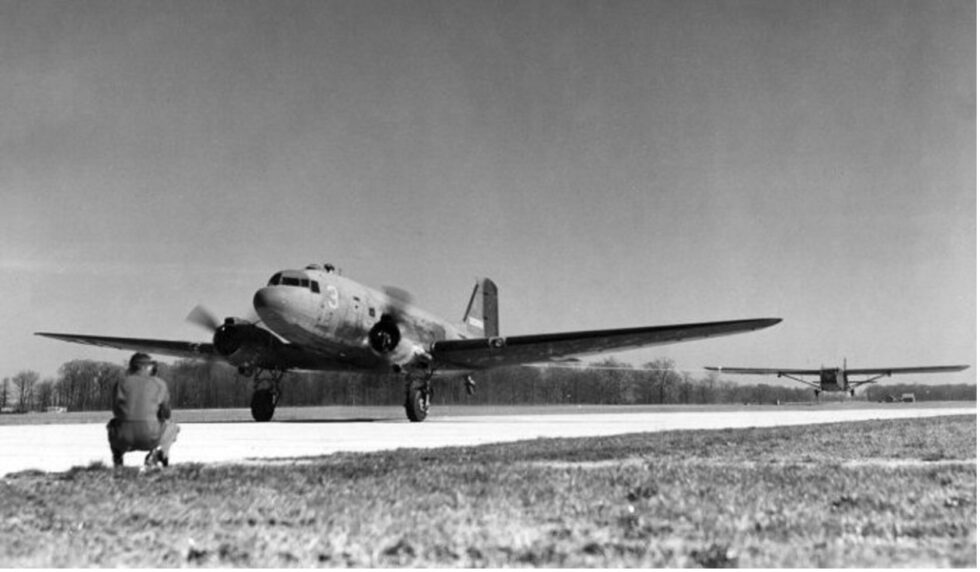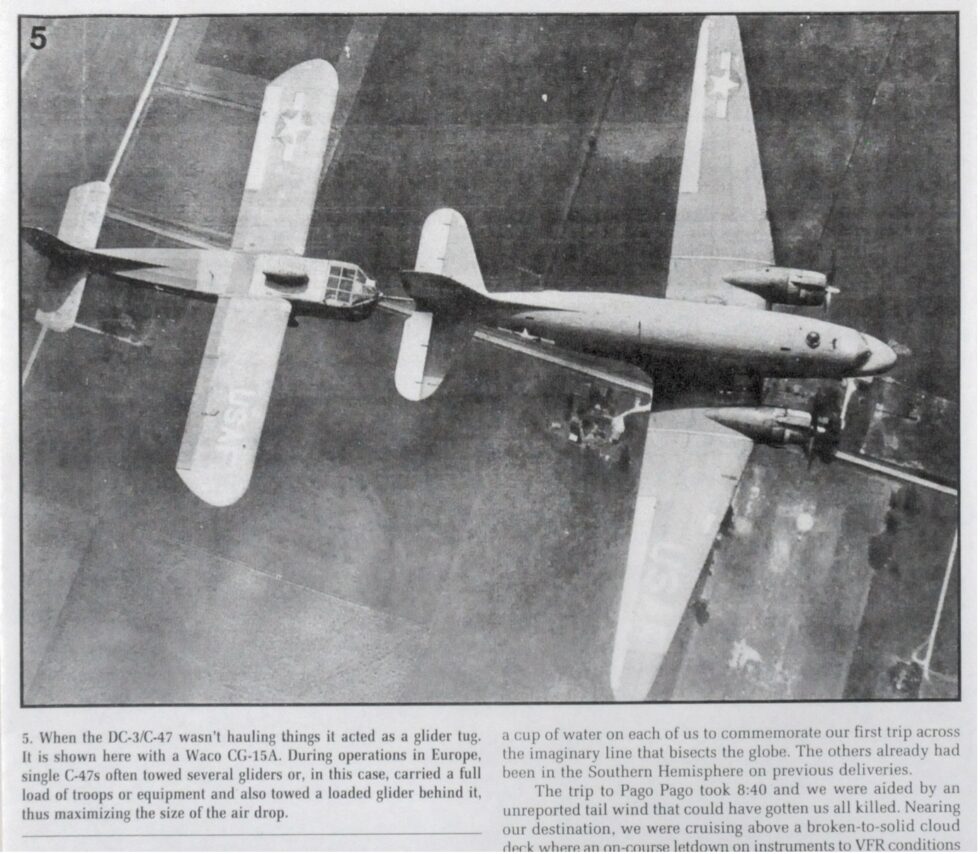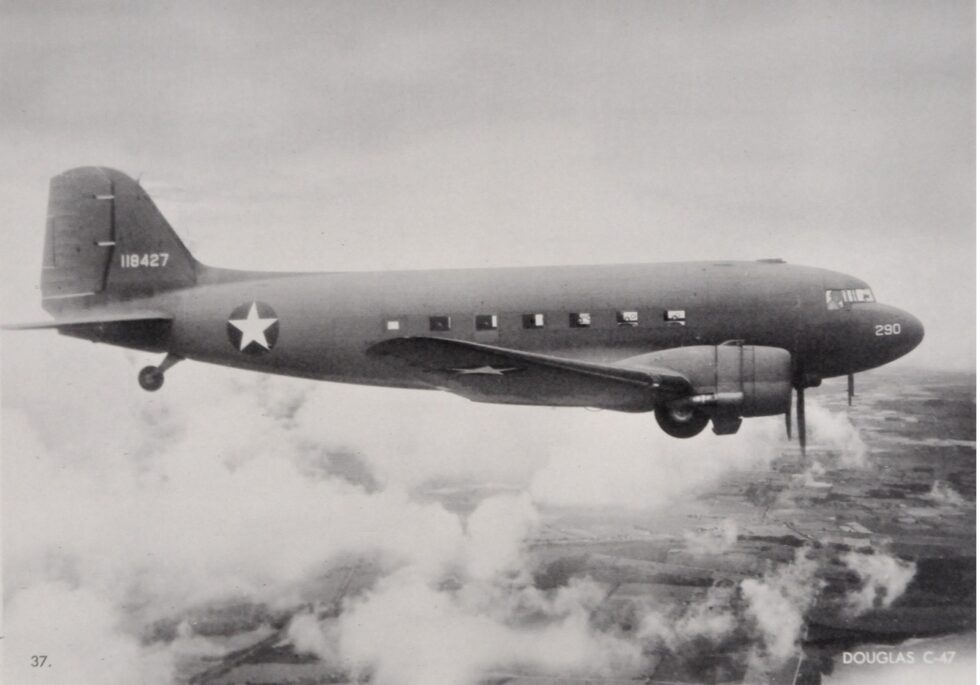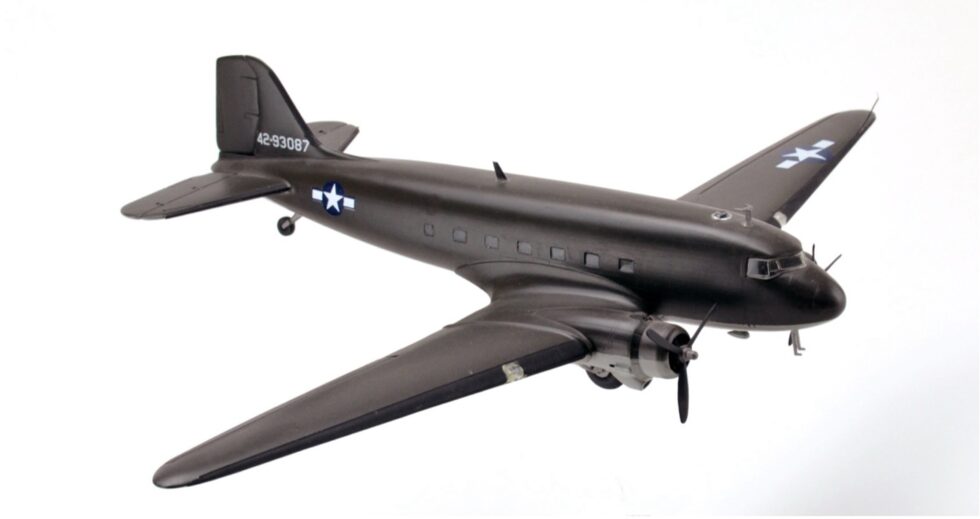USAAF Douglas C-47 Skytrain
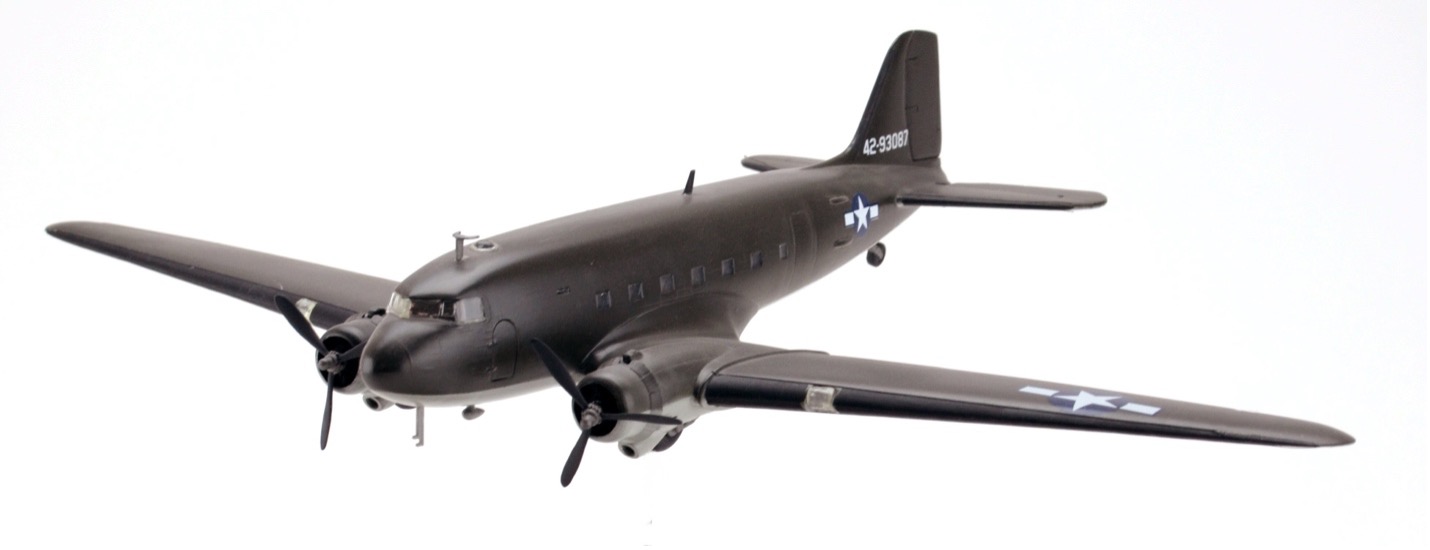
MODEL BY:
T. Oates
Model Scale:
1/72
MODEL ADDED:
03/24/1984
historical significance
First Albuquerque Visit: 1943
Additional Information:
The Douglas DC-3 is a propeller-driven airliner manufactured by Douglas Aircraft Company. It was developed as a larger, improved 14-bed sleeper version of the Douglas DC-2. It is a low-wing metal monoplane with conventional landing gear, powered by two radial piston engines of 1,000–1,200 hp. The DC-3 has a cruising speed of 207 mph, a capacity of 21 to 32 passengers or 6,000 pounds of cargo, and a range of 1,500 miles.
The Douglas C-47 Skytrain or Dakota, the British version, is a military transport aircraft developed from the civilian Douglas DC-3 airliner. It was used extensively by the Allies during World War II. During the war the C-47 was used for troop transport, cargo, paratrooper, for towing gliders and military cargo parachute drops. The C-47 remained in front-line service with various military operators for many years. The C-47 had many modifications including being fitted with a cargo door, hoist attachment and strengthened floor. It also had a shortened tail cone for glider-towing shackles and an astrodome in the cabin roof. More than 10,000 aircraft were produced in Long Beach and Santa Monica, California, and Oklahoma City, Oklahoma. Between March 1943 and August 1945, the Oklahoma City plant produced 5,354 C-47s.
The C-47 also earned the informal nickname “gooney bird” in the European theatre of operations. The C-47 had four crew members (pilot, co-pilot, navigator, and radio operator) and seats for 27 troops alongside the fuselage interior. The “Aerial Ambulances” fitted for casualty evacuation could carry 18 stretcher cases and a medical crew of three and 965 of that variant were built.
On July 8, 1942, glider pilot training began at Kirtland Field in Albuquerque New Mexico. The expanded training at Kirtland Field included a ground school for glider pilots—called the Glider Replacement Center, which was established in July 1942. The center served as a temporary training area for glider pilots awaiting vacancies at glider schools. The Army Air Forces glider-training program had expanded, and prior flight training was eliminated as a necessary qualification for candidates. The Glider Replacement Center operated until February 1943 when the school was moved to Ft. Sumner, but was still under administrative control of Kirtland Field.
At Kirtland Field, the Douglas C-47 Skytrain was used to tow the TG-6, TG-9, and CG4A gliders used at the school. One of the C-47 aircraft assigned to Kirtland Field was 42-43087 on July 10, 1943.
GALLERY:
SEARCH OUR DATABASE:

